Workforce Planning Analysis: Labour Market and Legal Considerations
VerifiedAdded on 2020/03/16
|11
|2449
|297
Report
AI Summary
This report provides a comprehensive analysis of workforce planning, examining its importance in organizations and its dependence on labor market conditions. It delves into the critical role of workforce planning in aligning organizational needs with workforce capabilities, ensuring regulatory compliance, and meeting production and service requirements. The report discusses challenges such as aging populations, financial constraints, and the impact of changing demographics, emphasizing the need for strategic workforce planning, especially in industries like airlines. It further explores the dynamics of strong and struggling labor markets, highlighting the implications for talent acquisition and retention. The report also addresses the legal aspects of recruitment, including compliance with consumer and employment laws in Australia. By examining various recruitment sources and processes, the report underscores the importance of effective workforce planning in anticipating market changes, adapting to legislative requirements, and developing sustainable strategies for talent management. The report also references key legislation such as the Competition and Consumer Act 2010 and the Fair Work Act 2009.
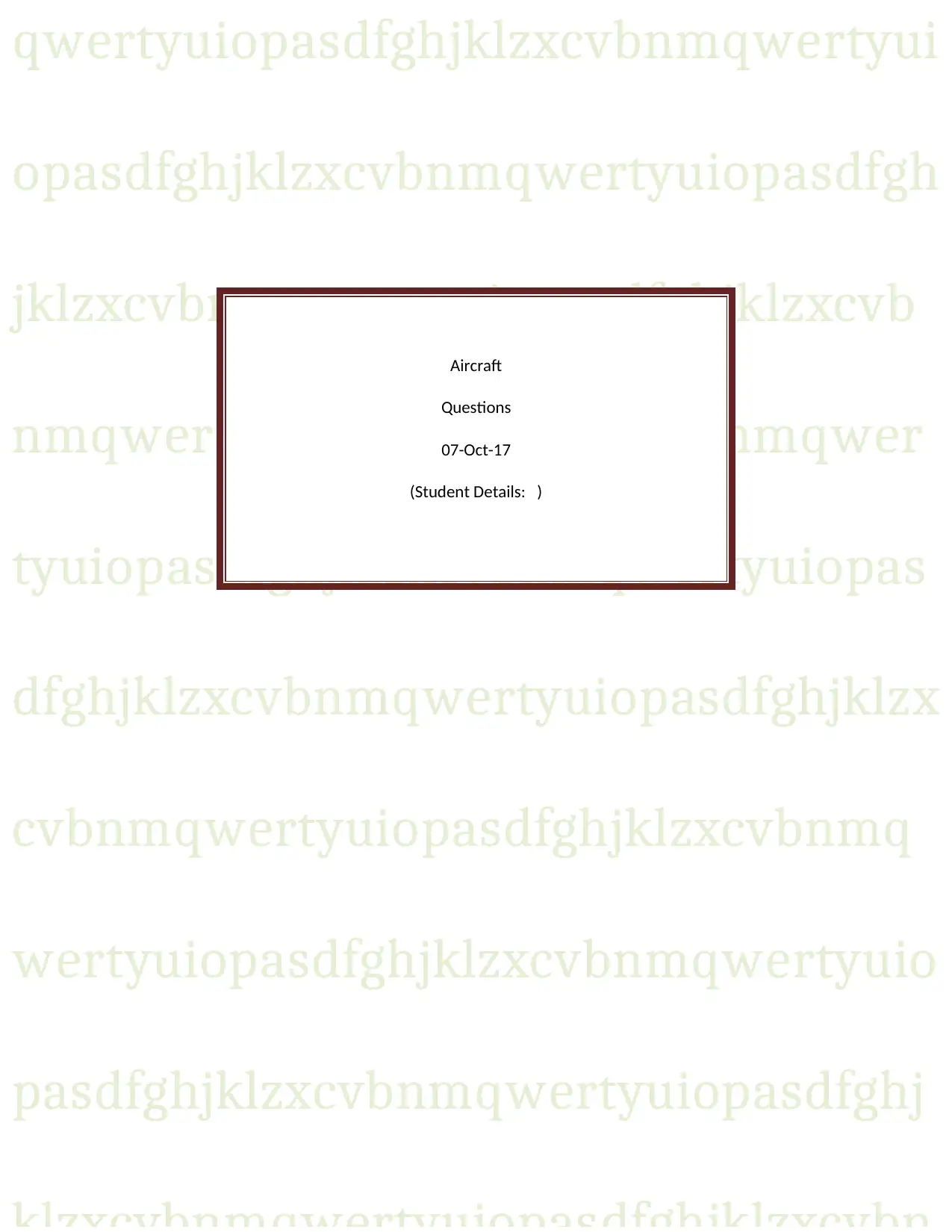
qwertyuiopasdfghjklzxcvbnmqwertyui
opasdfghjklzxcvbnmqwertyuiopasdfgh
jklzxcvbnmqwertyuiopasdfghjklzxcvb
nmqwertyuiopasdfghjklzxcvbnmqwer
tyuiopasdfghjklzxcvbnmqwertyuiopas
dfghjklzxcvbnmqwertyuiopasdfghjklzx
cvbnmqwertyuiopasdfghjklzxcvbnmq
wertyuiopasdfghjklzxcvbnmqwertyuio
pasdfghjklzxcvbnmqwertyuiopasdfghj
Aircraft
Questions
07-Oct-17
(Student Details: )
opasdfghjklzxcvbnmqwertyuiopasdfgh
jklzxcvbnmqwertyuiopasdfghjklzxcvb
nmqwertyuiopasdfghjklzxcvbnmqwer
tyuiopasdfghjklzxcvbnmqwertyuiopas
dfghjklzxcvbnmqwertyuiopasdfghjklzx
cvbnmqwertyuiopasdfghjklzxcvbnmq
wertyuiopasdfghjklzxcvbnmqwertyuio
pasdfghjklzxcvbnmqwertyuiopasdfghj
Aircraft
Questions
07-Oct-17
(Student Details: )
Paraphrase This Document
Need a fresh take? Get an instant paraphrase of this document with our AI Paraphraser
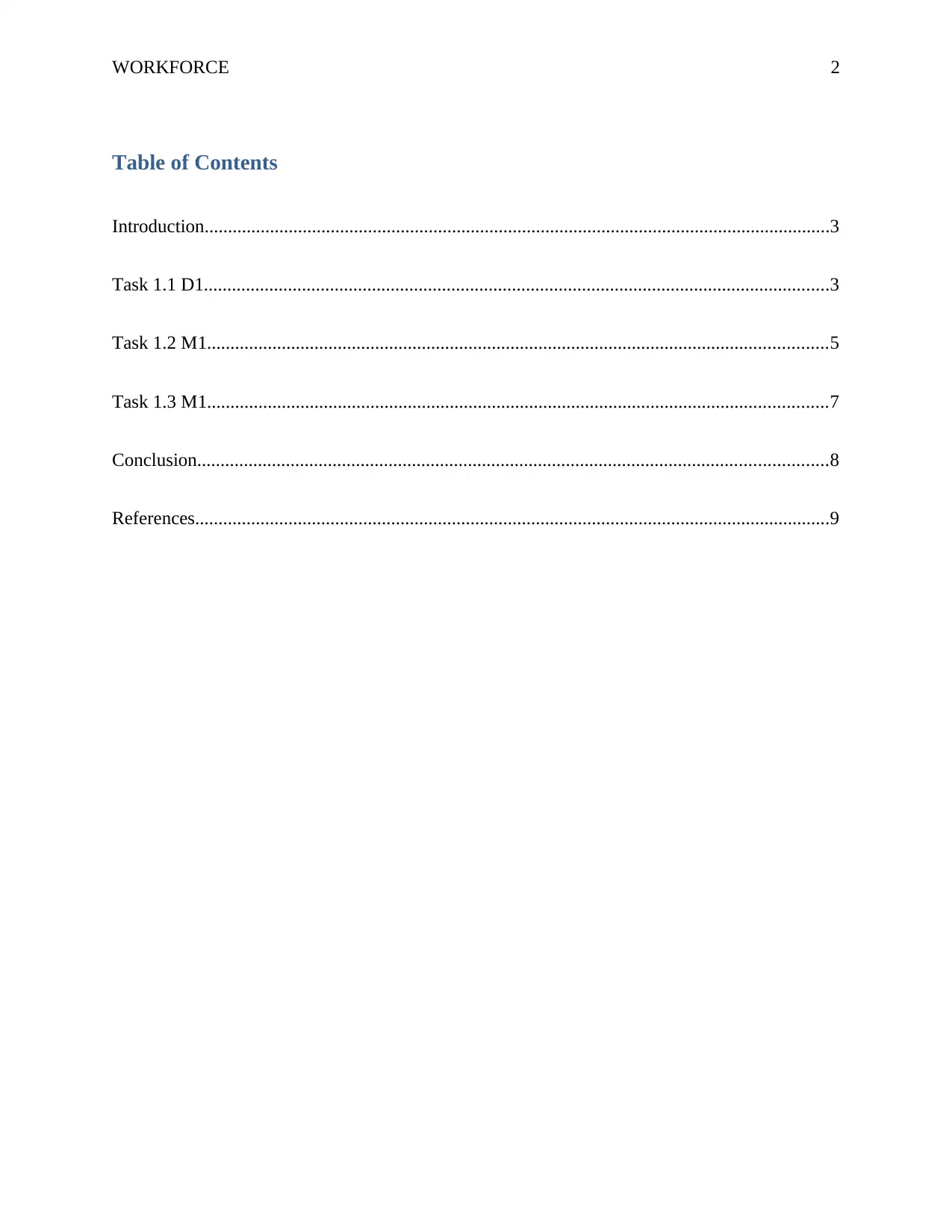
WORKFORCE 2
Table of Contents
Introduction......................................................................................................................................3
Task 1.1 D1......................................................................................................................................3
Task 1.2 M1.....................................................................................................................................5
Task 1.3 M1.....................................................................................................................................7
Conclusion.......................................................................................................................................8
References........................................................................................................................................9
Table of Contents
Introduction......................................................................................................................................3
Task 1.1 D1......................................................................................................................................3
Task 1.2 M1.....................................................................................................................................5
Task 1.3 M1.....................................................................................................................................7
Conclusion.......................................................................................................................................8
References........................................................................................................................................9
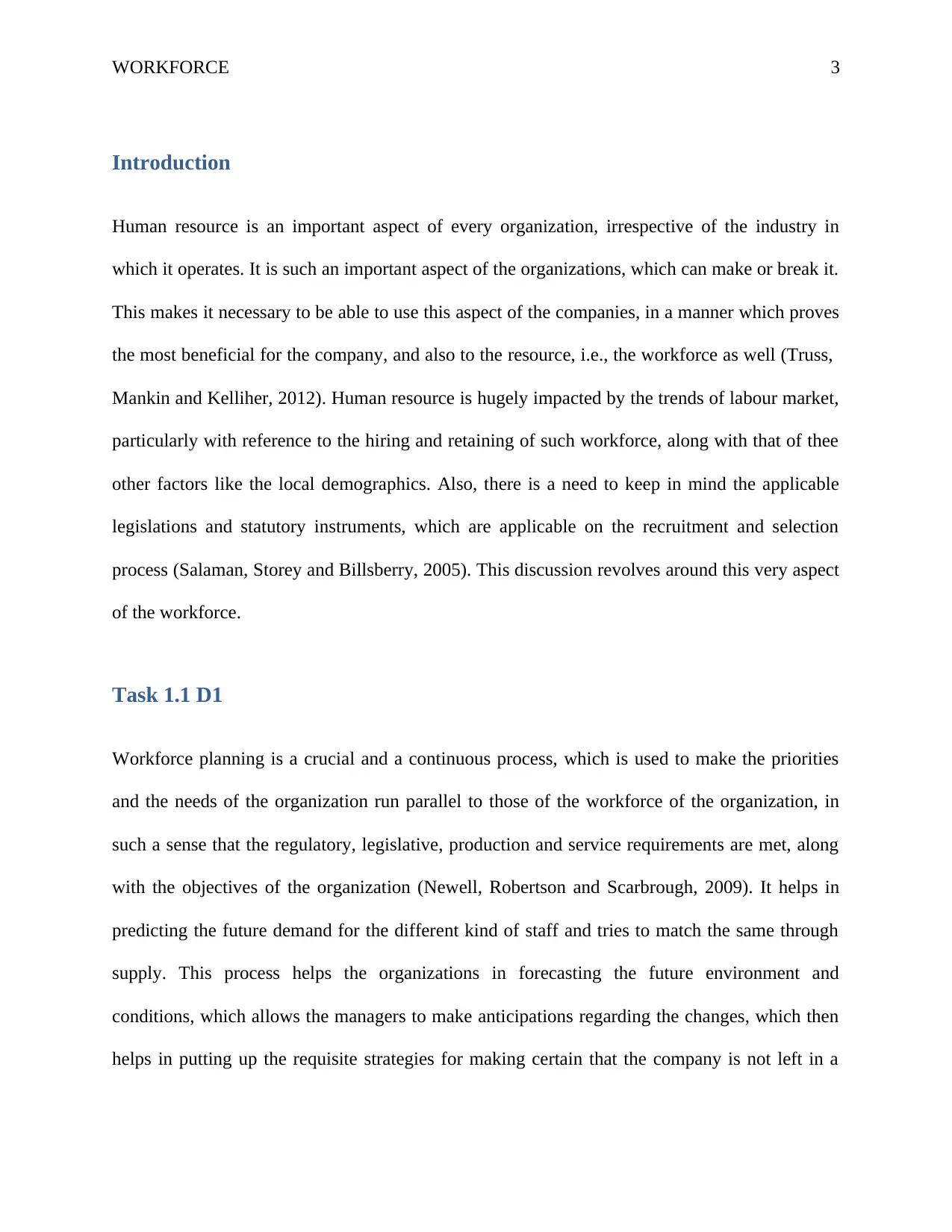
WORKFORCE 3
Introduction
Human resource is an important aspect of every organization, irrespective of the industry in
which it operates. It is such an important aspect of the organizations, which can make or break it.
This makes it necessary to be able to use this aspect of the companies, in a manner which proves
the most beneficial for the company, and also to the resource, i.e., the workforce as well (Truss,
Mankin and Kelliher, 2012). Human resource is hugely impacted by the trends of labour market,
particularly with reference to the hiring and retaining of such workforce, along with that of thee
other factors like the local demographics. Also, there is a need to keep in mind the applicable
legislations and statutory instruments, which are applicable on the recruitment and selection
process (Salaman, Storey and Billsberry, 2005). This discussion revolves around this very aspect
of the workforce.
Task 1.1 D1
Workforce planning is a crucial and a continuous process, which is used to make the priorities
and the needs of the organization run parallel to those of the workforce of the organization, in
such a sense that the regulatory, legislative, production and service requirements are met, along
with the objectives of the organization (Newell, Robertson and Scarbrough, 2009). It helps in
predicting the future demand for the different kind of staff and tries to match the same through
supply. This process helps the organizations in forecasting the future environment and
conditions, which allows the managers to make anticipations regarding the changes, which then
helps in putting up the requisite strategies for making certain that the company is not left in a
Introduction
Human resource is an important aspect of every organization, irrespective of the industry in
which it operates. It is such an important aspect of the organizations, which can make or break it.
This makes it necessary to be able to use this aspect of the companies, in a manner which proves
the most beneficial for the company, and also to the resource, i.e., the workforce as well (Truss,
Mankin and Kelliher, 2012). Human resource is hugely impacted by the trends of labour market,
particularly with reference to the hiring and retaining of such workforce, along with that of thee
other factors like the local demographics. Also, there is a need to keep in mind the applicable
legislations and statutory instruments, which are applicable on the recruitment and selection
process (Salaman, Storey and Billsberry, 2005). This discussion revolves around this very aspect
of the workforce.
Task 1.1 D1
Workforce planning is a crucial and a continuous process, which is used to make the priorities
and the needs of the organization run parallel to those of the workforce of the organization, in
such a sense that the regulatory, legislative, production and service requirements are met, along
with the objectives of the organization (Newell, Robertson and Scarbrough, 2009). It helps in
predicting the future demand for the different kind of staff and tries to match the same through
supply. This process helps the organizations in forecasting the future environment and
conditions, which allows the managers to make anticipations regarding the changes, which then
helps in putting up the requisite strategies for making certain that the company is not left in a
⊘ This is a preview!⊘
Do you want full access?
Subscribe today to unlock all pages.

Trusted by 1+ million students worldwide
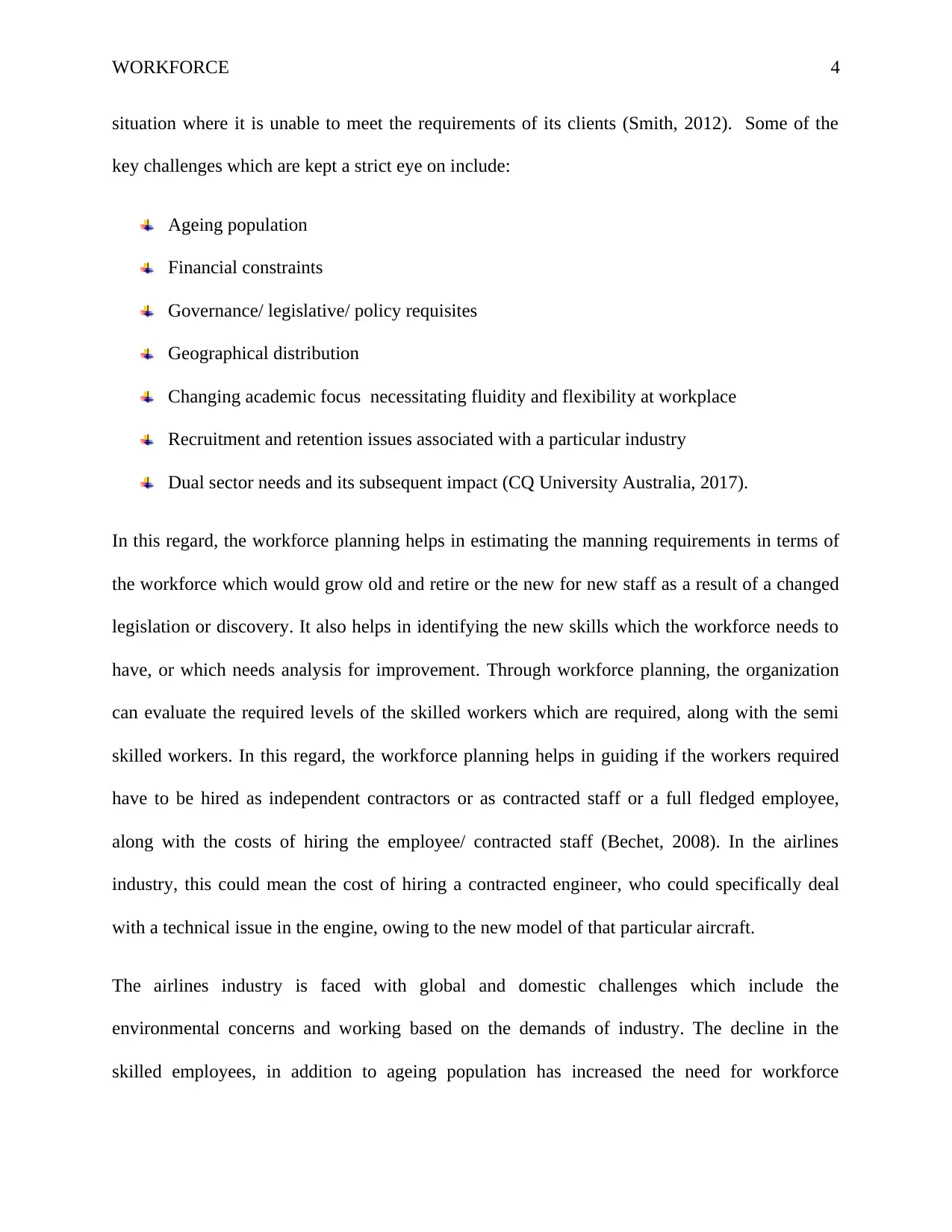
WORKFORCE 4
situation where it is unable to meet the requirements of its clients (Smith, 2012). Some of the
key challenges which are kept a strict eye on include:
Ageing population
Financial constraints
Governance/ legislative/ policy requisites
Geographical distribution
Changing academic focus necessitating fluidity and flexibility at workplace
Recruitment and retention issues associated with a particular industry
Dual sector needs and its subsequent impact (CQ University Australia, 2017).
In this regard, the workforce planning helps in estimating the manning requirements in terms of
the workforce which would grow old and retire or the new for new staff as a result of a changed
legislation or discovery. It also helps in identifying the new skills which the workforce needs to
have, or which needs analysis for improvement. Through workforce planning, the organization
can evaluate the required levels of the skilled workers which are required, along with the semi
skilled workers. In this regard, the workforce planning helps in guiding if the workers required
have to be hired as independent contractors or as contracted staff or a full fledged employee,
along with the costs of hiring the employee/ contracted staff (Bechet, 2008). In the airlines
industry, this could mean the cost of hiring a contracted engineer, who could specifically deal
with a technical issue in the engine, owing to the new model of that particular aircraft.
The airlines industry is faced with global and domestic challenges which include the
environmental concerns and working based on the demands of industry. The decline in the
skilled employees, in addition to ageing population has increased the need for workforce
situation where it is unable to meet the requirements of its clients (Smith, 2012). Some of the
key challenges which are kept a strict eye on include:
Ageing population
Financial constraints
Governance/ legislative/ policy requisites
Geographical distribution
Changing academic focus necessitating fluidity and flexibility at workplace
Recruitment and retention issues associated with a particular industry
Dual sector needs and its subsequent impact (CQ University Australia, 2017).
In this regard, the workforce planning helps in estimating the manning requirements in terms of
the workforce which would grow old and retire or the new for new staff as a result of a changed
legislation or discovery. It also helps in identifying the new skills which the workforce needs to
have, or which needs analysis for improvement. Through workforce planning, the organization
can evaluate the required levels of the skilled workers which are required, along with the semi
skilled workers. In this regard, the workforce planning helps in guiding if the workers required
have to be hired as independent contractors or as contracted staff or a full fledged employee,
along with the costs of hiring the employee/ contracted staff (Bechet, 2008). In the airlines
industry, this could mean the cost of hiring a contracted engineer, who could specifically deal
with a technical issue in the engine, owing to the new model of that particular aircraft.
The airlines industry is faced with global and domestic challenges which include the
environmental concerns and working based on the demands of industry. The decline in the
skilled employees, in addition to ageing population has increased the need for workforce
Paraphrase This Document
Need a fresh take? Get an instant paraphrase of this document with our AI Paraphraser
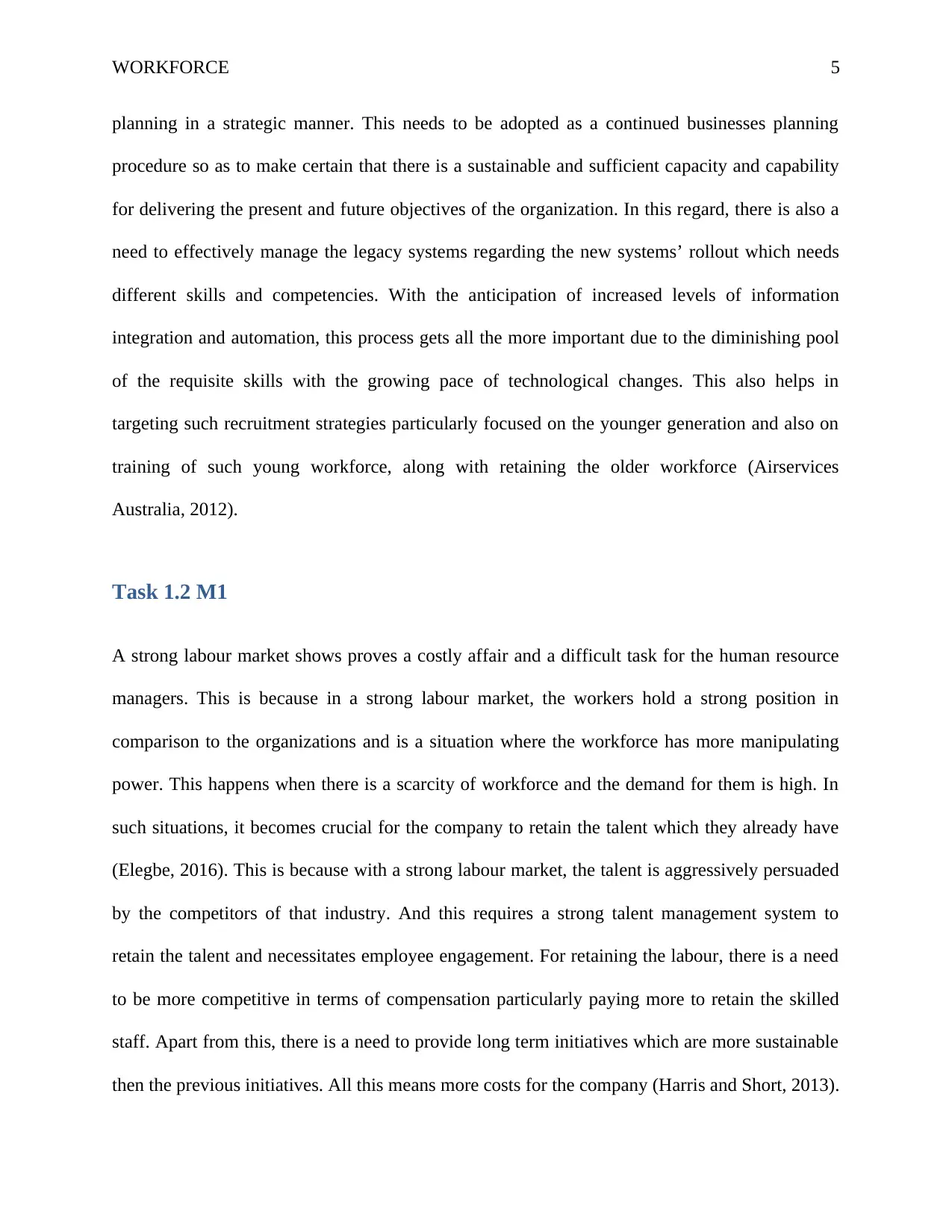
WORKFORCE 5
planning in a strategic manner. This needs to be adopted as a continued businesses planning
procedure so as to make certain that there is a sustainable and sufficient capacity and capability
for delivering the present and future objectives of the organization. In this regard, there is also a
need to effectively manage the legacy systems regarding the new systems’ rollout which needs
different skills and competencies. With the anticipation of increased levels of information
integration and automation, this process gets all the more important due to the diminishing pool
of the requisite skills with the growing pace of technological changes. This also helps in
targeting such recruitment strategies particularly focused on the younger generation and also on
training of such young workforce, along with retaining the older workforce (Airservices
Australia, 2012).
Task 1.2 M1
A strong labour market shows proves a costly affair and a difficult task for the human resource
managers. This is because in a strong labour market, the workers hold a strong position in
comparison to the organizations and is a situation where the workforce has more manipulating
power. This happens when there is a scarcity of workforce and the demand for them is high. In
such situations, it becomes crucial for the company to retain the talent which they already have
(Elegbe, 2016). This is because with a strong labour market, the talent is aggressively persuaded
by the competitors of that industry. And this requires a strong talent management system to
retain the talent and necessitates employee engagement. For retaining the labour, there is a need
to be more competitive in terms of compensation particularly paying more to retain the skilled
staff. Apart from this, there is a need to provide long term initiatives which are more sustainable
then the previous initiatives. All this means more costs for the company (Harris and Short, 2013).
planning in a strategic manner. This needs to be adopted as a continued businesses planning
procedure so as to make certain that there is a sustainable and sufficient capacity and capability
for delivering the present and future objectives of the organization. In this regard, there is also a
need to effectively manage the legacy systems regarding the new systems’ rollout which needs
different skills and competencies. With the anticipation of increased levels of information
integration and automation, this process gets all the more important due to the diminishing pool
of the requisite skills with the growing pace of technological changes. This also helps in
targeting such recruitment strategies particularly focused on the younger generation and also on
training of such young workforce, along with retaining the older workforce (Airservices
Australia, 2012).
Task 1.2 M1
A strong labour market shows proves a costly affair and a difficult task for the human resource
managers. This is because in a strong labour market, the workers hold a strong position in
comparison to the organizations and is a situation where the workforce has more manipulating
power. This happens when there is a scarcity of workforce and the demand for them is high. In
such situations, it becomes crucial for the company to retain the talent which they already have
(Elegbe, 2016). This is because with a strong labour market, the talent is aggressively persuaded
by the competitors of that industry. And this requires a strong talent management system to
retain the talent and necessitates employee engagement. For retaining the labour, there is a need
to be more competitive in terms of compensation particularly paying more to retain the skilled
staff. Apart from this, there is a need to provide long term initiatives which are more sustainable
then the previous initiatives. All this means more costs for the company (Harris and Short, 2013).
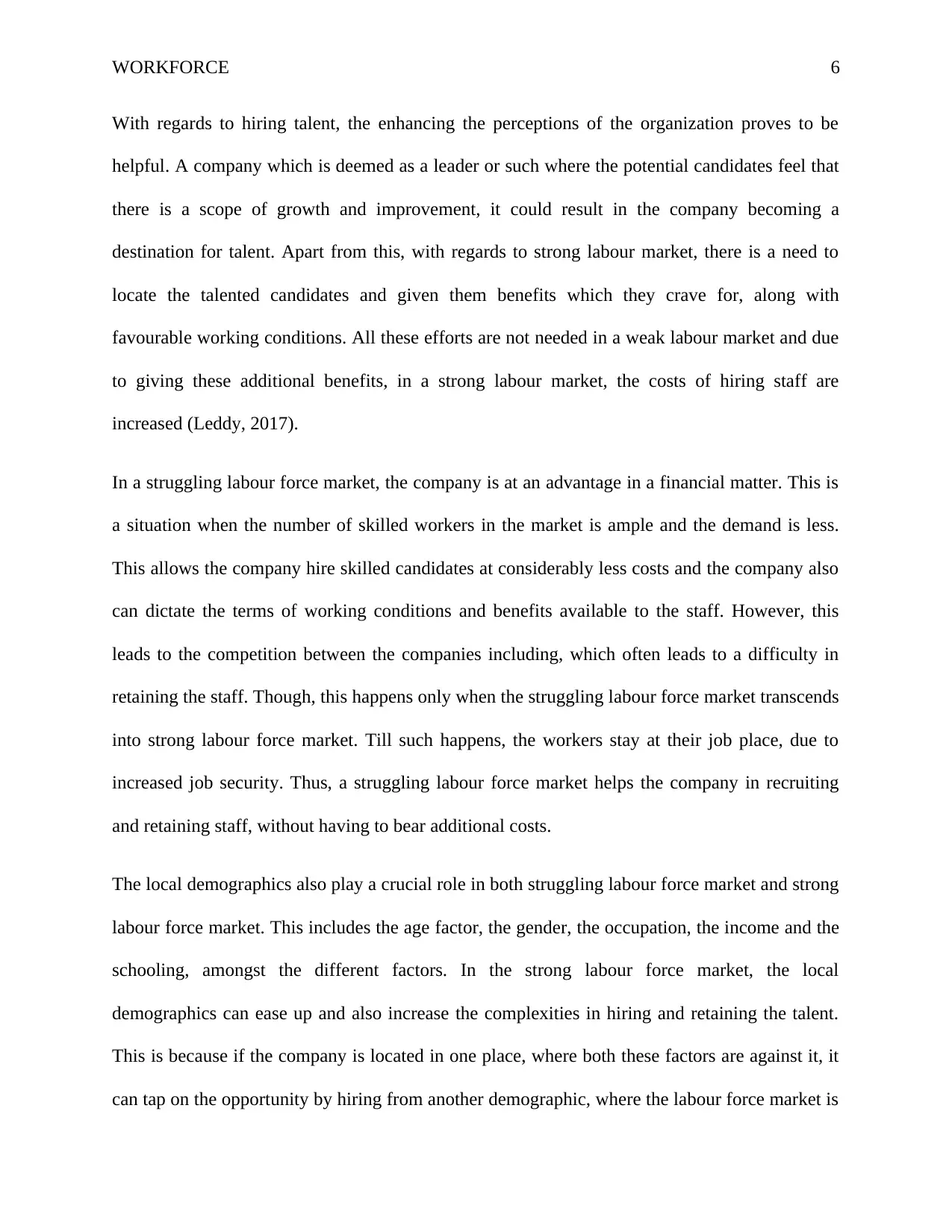
WORKFORCE 6
With regards to hiring talent, the enhancing the perceptions of the organization proves to be
helpful. A company which is deemed as a leader or such where the potential candidates feel that
there is a scope of growth and improvement, it could result in the company becoming a
destination for talent. Apart from this, with regards to strong labour market, there is a need to
locate the talented candidates and given them benefits which they crave for, along with
favourable working conditions. All these efforts are not needed in a weak labour market and due
to giving these additional benefits, in a strong labour market, the costs of hiring staff are
increased (Leddy, 2017).
In a struggling labour force market, the company is at an advantage in a financial matter. This is
a situation when the number of skilled workers in the market is ample and the demand is less.
This allows the company hire skilled candidates at considerably less costs and the company also
can dictate the terms of working conditions and benefits available to the staff. However, this
leads to the competition between the companies including, which often leads to a difficulty in
retaining the staff. Though, this happens only when the struggling labour force market transcends
into strong labour force market. Till such happens, the workers stay at their job place, due to
increased job security. Thus, a struggling labour force market helps the company in recruiting
and retaining staff, without having to bear additional costs.
The local demographics also play a crucial role in both struggling labour force market and strong
labour force market. This includes the age factor, the gender, the occupation, the income and the
schooling, amongst the different factors. In the strong labour force market, the local
demographics can ease up and also increase the complexities in hiring and retaining the talent.
This is because if the company is located in one place, where both these factors are against it, it
can tap on the opportunity by hiring from another demographic, where the labour force market is
With regards to hiring talent, the enhancing the perceptions of the organization proves to be
helpful. A company which is deemed as a leader or such where the potential candidates feel that
there is a scope of growth and improvement, it could result in the company becoming a
destination for talent. Apart from this, with regards to strong labour market, there is a need to
locate the talented candidates and given them benefits which they crave for, along with
favourable working conditions. All these efforts are not needed in a weak labour market and due
to giving these additional benefits, in a strong labour market, the costs of hiring staff are
increased (Leddy, 2017).
In a struggling labour force market, the company is at an advantage in a financial matter. This is
a situation when the number of skilled workers in the market is ample and the demand is less.
This allows the company hire skilled candidates at considerably less costs and the company also
can dictate the terms of working conditions and benefits available to the staff. However, this
leads to the competition between the companies including, which often leads to a difficulty in
retaining the staff. Though, this happens only when the struggling labour force market transcends
into strong labour force market. Till such happens, the workers stay at their job place, due to
increased job security. Thus, a struggling labour force market helps the company in recruiting
and retaining staff, without having to bear additional costs.
The local demographics also play a crucial role in both struggling labour force market and strong
labour force market. This includes the age factor, the gender, the occupation, the income and the
schooling, amongst the different factors. In the strong labour force market, the local
demographics can ease up and also increase the complexities in hiring and retaining the talent.
This is because if the company is located in one place, where both these factors are against it, it
can tap on the opportunity by hiring from another demographic, where the labour force market is
⊘ This is a preview!⊘
Do you want full access?
Subscribe today to unlock all pages.

Trusted by 1+ million students worldwide
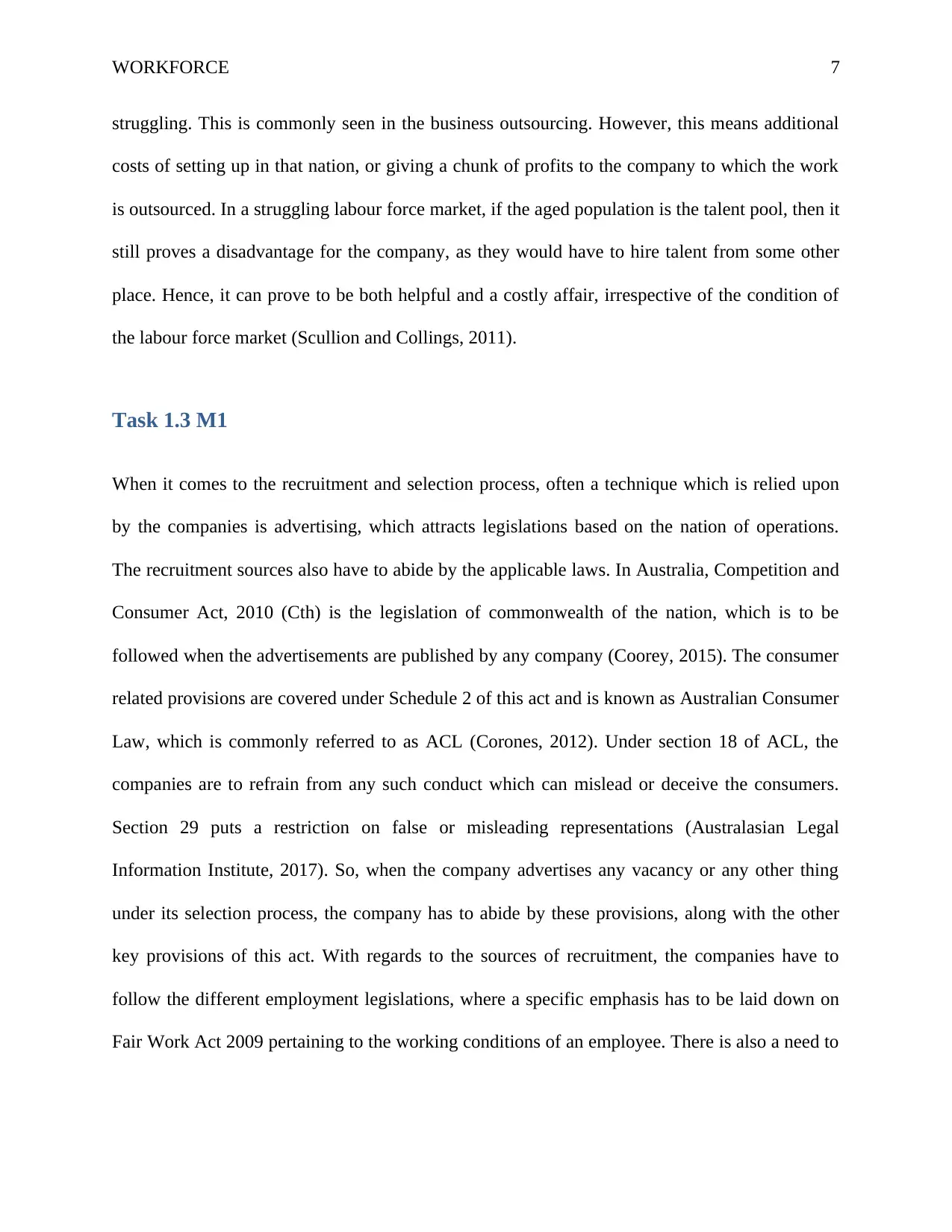
WORKFORCE 7
struggling. This is commonly seen in the business outsourcing. However, this means additional
costs of setting up in that nation, or giving a chunk of profits to the company to which the work
is outsourced. In a struggling labour force market, if the aged population is the talent pool, then it
still proves a disadvantage for the company, as they would have to hire talent from some other
place. Hence, it can prove to be both helpful and a costly affair, irrespective of the condition of
the labour force market (Scullion and Collings, 2011).
Task 1.3 M1
When it comes to the recruitment and selection process, often a technique which is relied upon
by the companies is advertising, which attracts legislations based on the nation of operations.
The recruitment sources also have to abide by the applicable laws. In Australia, Competition and
Consumer Act, 2010 (Cth) is the legislation of commonwealth of the nation, which is to be
followed when the advertisements are published by any company (Coorey, 2015). The consumer
related provisions are covered under Schedule 2 of this act and is known as Australian Consumer
Law, which is commonly referred to as ACL (Corones, 2012). Under section 18 of ACL, the
companies are to refrain from any such conduct which can mislead or deceive the consumers.
Section 29 puts a restriction on false or misleading representations (Australasian Legal
Information Institute, 2017). So, when the company advertises any vacancy or any other thing
under its selection process, the company has to abide by these provisions, along with the other
key provisions of this act. With regards to the sources of recruitment, the companies have to
follow the different employment legislations, where a specific emphasis has to be laid down on
Fair Work Act 2009 pertaining to the working conditions of an employee. There is also a need to
struggling. This is commonly seen in the business outsourcing. However, this means additional
costs of setting up in that nation, or giving a chunk of profits to the company to which the work
is outsourced. In a struggling labour force market, if the aged population is the talent pool, then it
still proves a disadvantage for the company, as they would have to hire talent from some other
place. Hence, it can prove to be both helpful and a costly affair, irrespective of the condition of
the labour force market (Scullion and Collings, 2011).
Task 1.3 M1
When it comes to the recruitment and selection process, often a technique which is relied upon
by the companies is advertising, which attracts legislations based on the nation of operations.
The recruitment sources also have to abide by the applicable laws. In Australia, Competition and
Consumer Act, 2010 (Cth) is the legislation of commonwealth of the nation, which is to be
followed when the advertisements are published by any company (Coorey, 2015). The consumer
related provisions are covered under Schedule 2 of this act and is known as Australian Consumer
Law, which is commonly referred to as ACL (Corones, 2012). Under section 18 of ACL, the
companies are to refrain from any such conduct which can mislead or deceive the consumers.
Section 29 puts a restriction on false or misleading representations (Australasian Legal
Information Institute, 2017). So, when the company advertises any vacancy or any other thing
under its selection process, the company has to abide by these provisions, along with the other
key provisions of this act. With regards to the sources of recruitment, the companies have to
follow the different employment legislations, where a specific emphasis has to be laid down on
Fair Work Act 2009 pertaining to the working conditions of an employee. There is also a need to
Paraphrase This Document
Need a fresh take? Get an instant paraphrase of this document with our AI Paraphraser
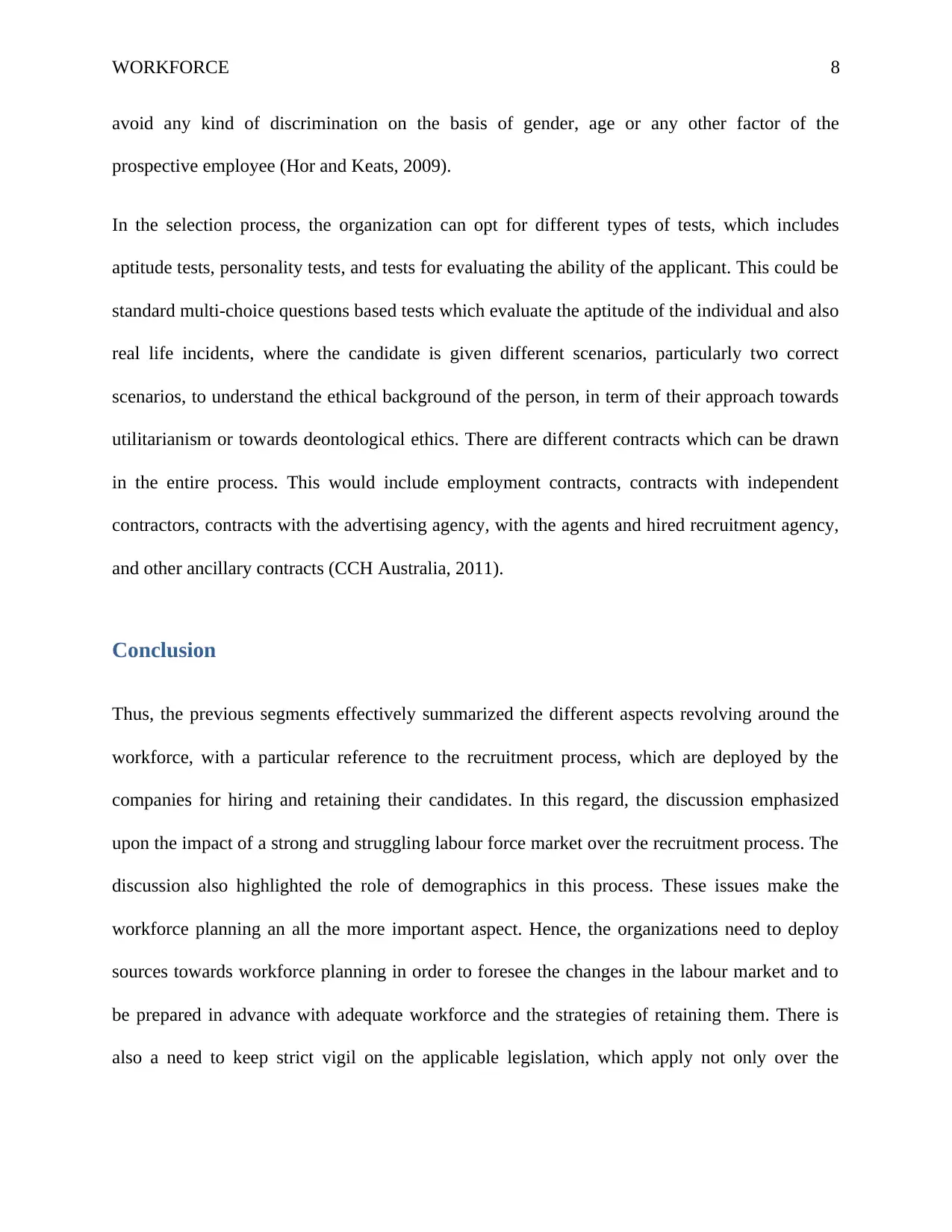
WORKFORCE 8
avoid any kind of discrimination on the basis of gender, age or any other factor of the
prospective employee (Hor and Keats, 2009).
In the selection process, the organization can opt for different types of tests, which includes
aptitude tests, personality tests, and tests for evaluating the ability of the applicant. This could be
standard multi-choice questions based tests which evaluate the aptitude of the individual and also
real life incidents, where the candidate is given different scenarios, particularly two correct
scenarios, to understand the ethical background of the person, in term of their approach towards
utilitarianism or towards deontological ethics. There are different contracts which can be drawn
in the entire process. This would include employment contracts, contracts with independent
contractors, contracts with the advertising agency, with the agents and hired recruitment agency,
and other ancillary contracts (CCH Australia, 2011).
Conclusion
Thus, the previous segments effectively summarized the different aspects revolving around the
workforce, with a particular reference to the recruitment process, which are deployed by the
companies for hiring and retaining their candidates. In this regard, the discussion emphasized
upon the impact of a strong and struggling labour force market over the recruitment process. The
discussion also highlighted the role of demographics in this process. These issues make the
workforce planning an all the more important aspect. Hence, the organizations need to deploy
sources towards workforce planning in order to foresee the changes in the labour market and to
be prepared in advance with adequate workforce and the strategies of retaining them. There is
also a need to keep strict vigil on the applicable legislation, which apply not only over the
avoid any kind of discrimination on the basis of gender, age or any other factor of the
prospective employee (Hor and Keats, 2009).
In the selection process, the organization can opt for different types of tests, which includes
aptitude tests, personality tests, and tests for evaluating the ability of the applicant. This could be
standard multi-choice questions based tests which evaluate the aptitude of the individual and also
real life incidents, where the candidate is given different scenarios, particularly two correct
scenarios, to understand the ethical background of the person, in term of their approach towards
utilitarianism or towards deontological ethics. There are different contracts which can be drawn
in the entire process. This would include employment contracts, contracts with independent
contractors, contracts with the advertising agency, with the agents and hired recruitment agency,
and other ancillary contracts (CCH Australia, 2011).
Conclusion
Thus, the previous segments effectively summarized the different aspects revolving around the
workforce, with a particular reference to the recruitment process, which are deployed by the
companies for hiring and retaining their candidates. In this regard, the discussion emphasized
upon the impact of a strong and struggling labour force market over the recruitment process. The
discussion also highlighted the role of demographics in this process. These issues make the
workforce planning an all the more important aspect. Hence, the organizations need to deploy
sources towards workforce planning in order to foresee the changes in the labour market and to
be prepared in advance with adequate workforce and the strategies of retaining them. There is
also a need to keep strict vigil on the applicable legislation, which apply not only over the
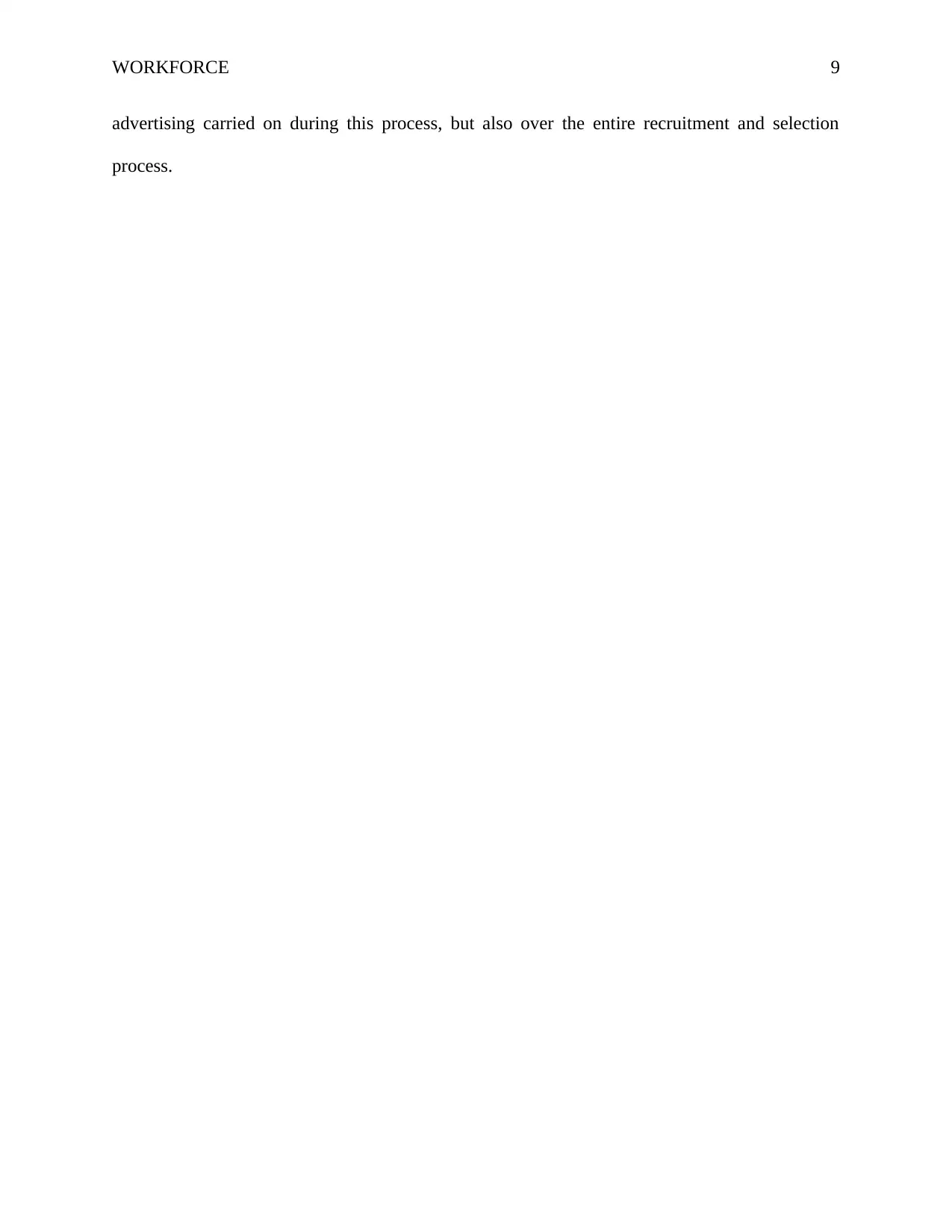
WORKFORCE 9
advertising carried on during this process, but also over the entire recruitment and selection
process.
advertising carried on during this process, but also over the entire recruitment and selection
process.
⊘ This is a preview!⊘
Do you want full access?
Subscribe today to unlock all pages.

Trusted by 1+ million students worldwide
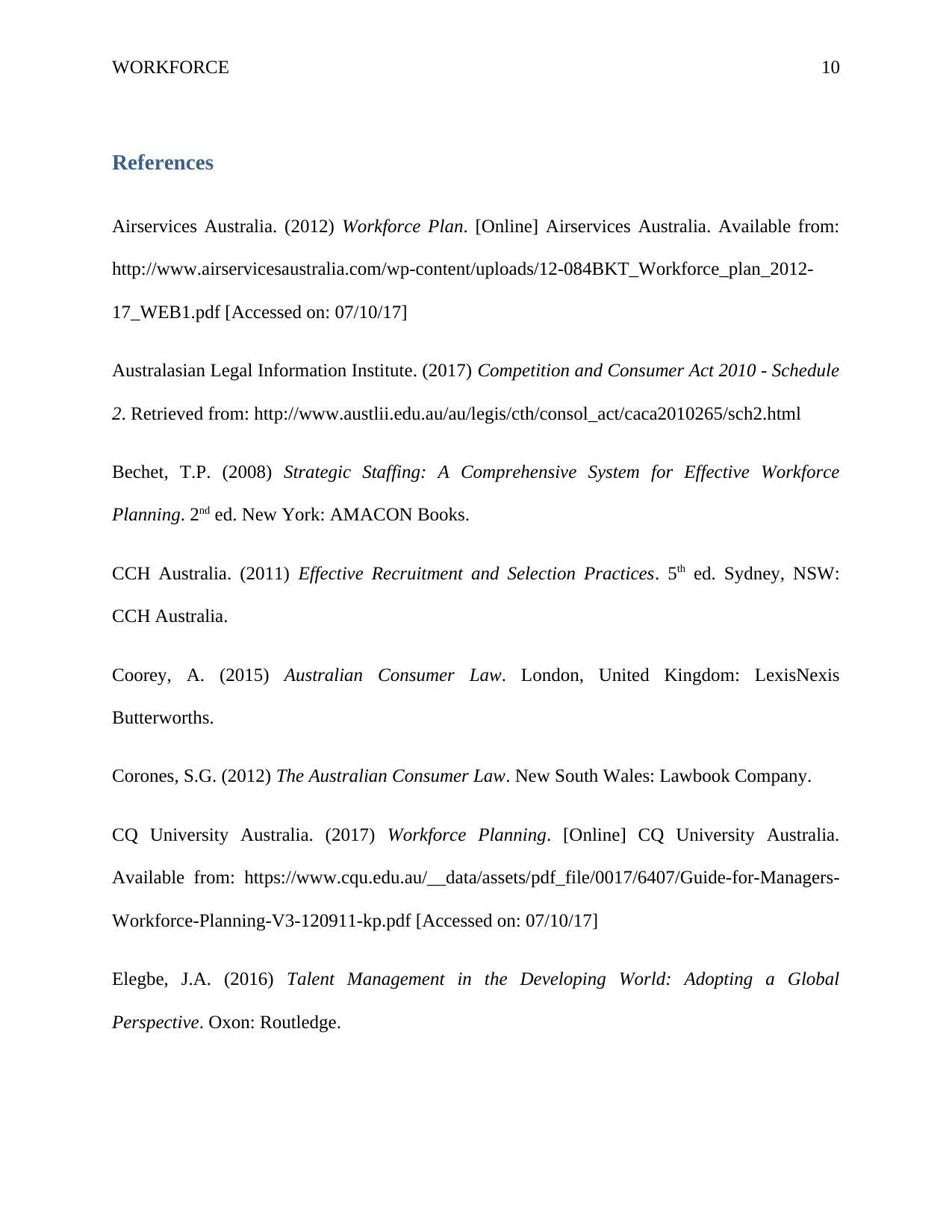
WORKFORCE 10
References
Airservices Australia. (2012) Workforce Plan. [Online] Airservices Australia. Available from:
http://www.airservicesaustralia.com/wp-content/uploads/12-084BKT_Workforce_plan_2012-
17_WEB1.pdf [Accessed on: 07/10/17]
Australasian Legal Information Institute. (2017) Competition and Consumer Act 2010 - Schedule
2. Retrieved from: http://www.austlii.edu.au/au/legis/cth/consol_act/caca2010265/sch2.html
Bechet, T.P. (2008) Strategic Staffing: A Comprehensive System for Effective Workforce
Planning. 2nd ed. New York: AMACON Books.
CCH Australia. (2011) Effective Recruitment and Selection Practices. 5th ed. Sydney, NSW:
CCH Australia.
Coorey, A. (2015) Australian Consumer Law. London, United Kingdom: LexisNexis
Butterworths.
Corones, S.G. (2012) The Australian Consumer Law. New South Wales: Lawbook Company.
CQ University Australia. (2017) Workforce Planning. [Online] CQ University Australia.
Available from: https://www.cqu.edu.au/__data/assets/pdf_file/0017/6407/Guide-for-Managers-
Workforce-Planning-V3-120911-kp.pdf [Accessed on: 07/10/17]
Elegbe, J.A. (2016) Talent Management in the Developing World: Adopting a Global
Perspective. Oxon: Routledge.
References
Airservices Australia. (2012) Workforce Plan. [Online] Airservices Australia. Available from:
http://www.airservicesaustralia.com/wp-content/uploads/12-084BKT_Workforce_plan_2012-
17_WEB1.pdf [Accessed on: 07/10/17]
Australasian Legal Information Institute. (2017) Competition and Consumer Act 2010 - Schedule
2. Retrieved from: http://www.austlii.edu.au/au/legis/cth/consol_act/caca2010265/sch2.html
Bechet, T.P. (2008) Strategic Staffing: A Comprehensive System for Effective Workforce
Planning. 2nd ed. New York: AMACON Books.
CCH Australia. (2011) Effective Recruitment and Selection Practices. 5th ed. Sydney, NSW:
CCH Australia.
Coorey, A. (2015) Australian Consumer Law. London, United Kingdom: LexisNexis
Butterworths.
Corones, S.G. (2012) The Australian Consumer Law. New South Wales: Lawbook Company.
CQ University Australia. (2017) Workforce Planning. [Online] CQ University Australia.
Available from: https://www.cqu.edu.au/__data/assets/pdf_file/0017/6407/Guide-for-Managers-
Workforce-Planning-V3-120911-kp.pdf [Accessed on: 07/10/17]
Elegbe, J.A. (2016) Talent Management in the Developing World: Adopting a Global
Perspective. Oxon: Routledge.
Paraphrase This Document
Need a fresh take? Get an instant paraphrase of this document with our AI Paraphraser
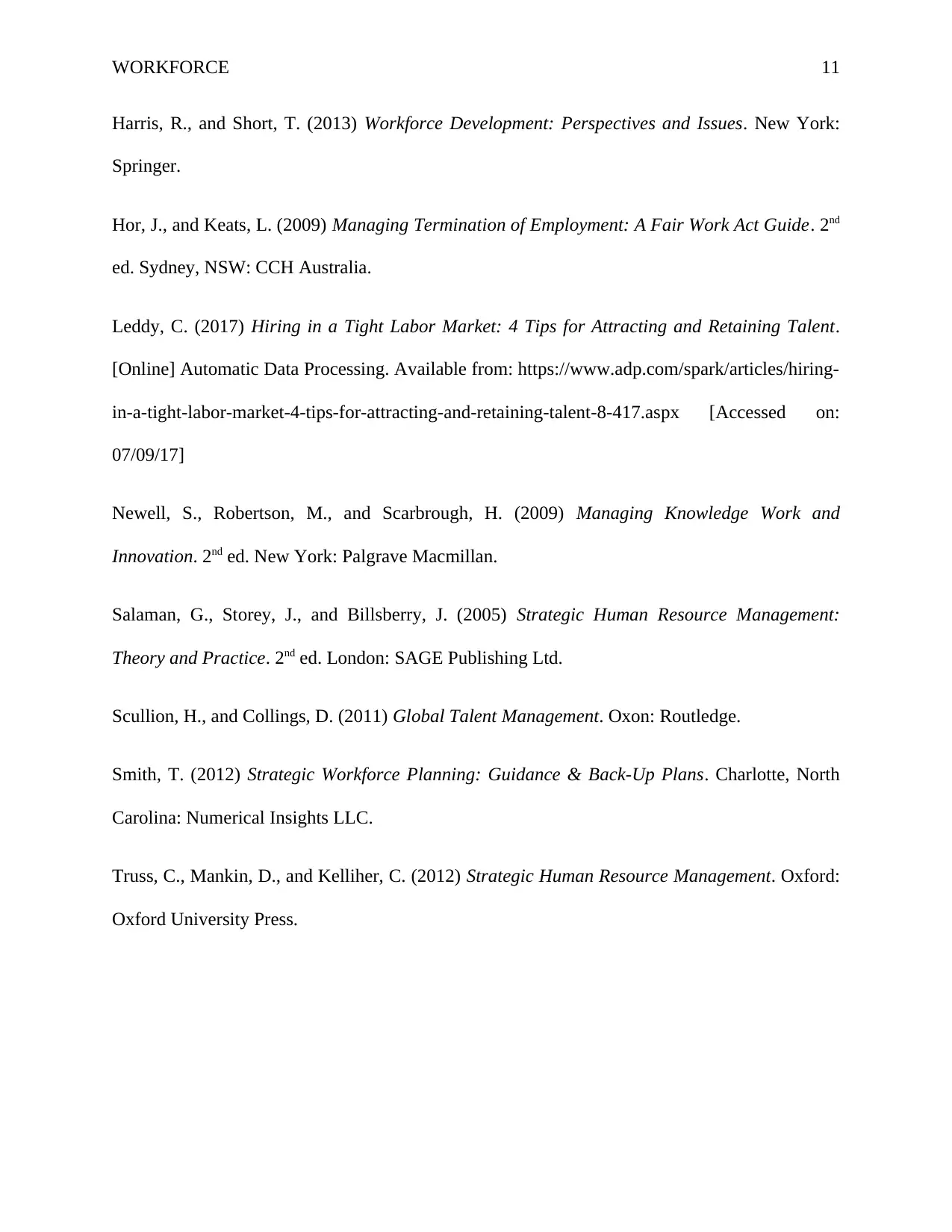
WORKFORCE 11
Harris, R., and Short, T. (2013) Workforce Development: Perspectives and Issues. New York:
Springer.
Hor, J., and Keats, L. (2009) Managing Termination of Employment: A Fair Work Act Guide. 2nd
ed. Sydney, NSW: CCH Australia.
Leddy, C. (2017) Hiring in a Tight Labor Market: 4 Tips for Attracting and Retaining Talent.
[Online] Automatic Data Processing. Available from: https://www.adp.com/spark/articles/hiring-
in-a-tight-labor-market-4-tips-for-attracting-and-retaining-talent-8-417.aspx [Accessed on:
07/09/17]
Newell, S., Robertson, M., and Scarbrough, H. (2009) Managing Knowledge Work and
Innovation. 2nd ed. New York: Palgrave Macmillan.
Salaman, G., Storey, J., and Billsberry, J. (2005) Strategic Human Resource Management:
Theory and Practice. 2nd ed. London: SAGE Publishing Ltd.
Scullion, H., and Collings, D. (2011) Global Talent Management. Oxon: Routledge.
Smith, T. (2012) Strategic Workforce Planning: Guidance & Back-Up Plans. Charlotte, North
Carolina: Numerical Insights LLC.
Truss, C., Mankin, D., and Kelliher, C. (2012) Strategic Human Resource Management. Oxford:
Oxford University Press.
Harris, R., and Short, T. (2013) Workforce Development: Perspectives and Issues. New York:
Springer.
Hor, J., and Keats, L. (2009) Managing Termination of Employment: A Fair Work Act Guide. 2nd
ed. Sydney, NSW: CCH Australia.
Leddy, C. (2017) Hiring in a Tight Labor Market: 4 Tips for Attracting and Retaining Talent.
[Online] Automatic Data Processing. Available from: https://www.adp.com/spark/articles/hiring-
in-a-tight-labor-market-4-tips-for-attracting-and-retaining-talent-8-417.aspx [Accessed on:
07/09/17]
Newell, S., Robertson, M., and Scarbrough, H. (2009) Managing Knowledge Work and
Innovation. 2nd ed. New York: Palgrave Macmillan.
Salaman, G., Storey, J., and Billsberry, J. (2005) Strategic Human Resource Management:
Theory and Practice. 2nd ed. London: SAGE Publishing Ltd.
Scullion, H., and Collings, D. (2011) Global Talent Management. Oxon: Routledge.
Smith, T. (2012) Strategic Workforce Planning: Guidance & Back-Up Plans. Charlotte, North
Carolina: Numerical Insights LLC.
Truss, C., Mankin, D., and Kelliher, C. (2012) Strategic Human Resource Management. Oxford:
Oxford University Press.
1 out of 11
Related Documents
Your All-in-One AI-Powered Toolkit for Academic Success.
+13062052269
info@desklib.com
Available 24*7 on WhatsApp / Email
![[object Object]](/_next/static/media/star-bottom.7253800d.svg)
Unlock your academic potential
Copyright © 2020–2025 A2Z Services. All Rights Reserved. Developed and managed by ZUCOL.




